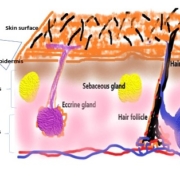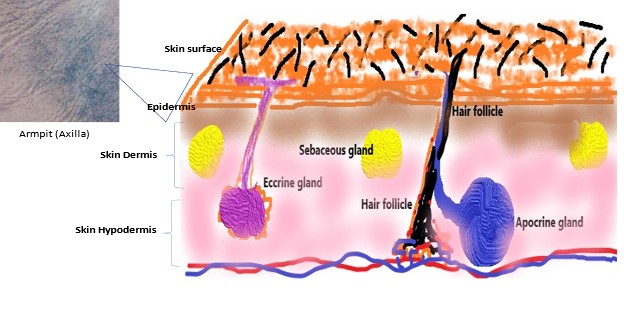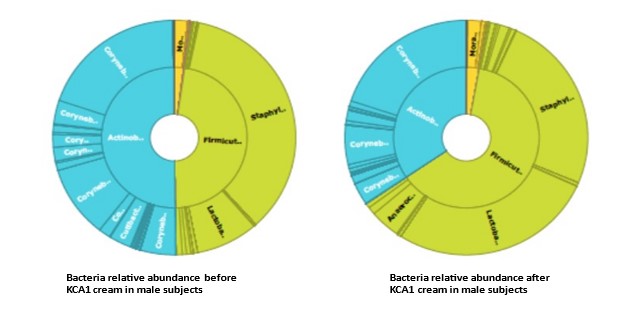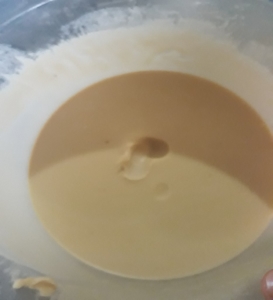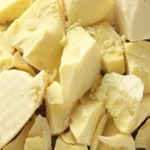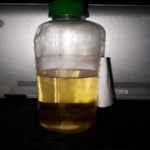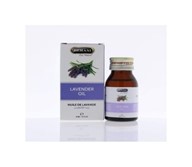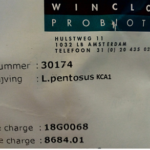Can control of body malodor using probiotic topical cream be considered as a health benefit?
By Victoria Onwuliri, Masters degree student, with Dr. Kingsley C. Anukam, Department of Medical Laboratory Science, Faculty of Health Sciences and Technology, College of Health Sciences, Nnamdi Azikiwe University, Nnewi Campus, Nnewi, Anambra State, Nigeria.
I recall years back as a teenager, axillary sweating and pubertal odor were one of the overwhelming challenges I experienced. It really affected how I related with the people around me, and I became socially withdrawn. I was introduced to the use of deodorants after a very attractive advertisement on television. Truthfully, though, these personal hygiene products were not a good match for my active teenage lifestyle because their effects waned easily and I was back to my sweaty self. This continued with all different products I used; they would wear off, leaving my axilla smelling stronger than before. Sharing my experience with other adolescents like me made me realize that we all were facing similar issues and were seeking a long-lasting solution. I am very certain many teenagers and young adults all over the world are currently experiencing same problem and are in need of a solution.
Later on, as a scientist, I wondered if I could explore a solution for this problem. First, what was causing the odor? Several fundamental studies have shown that the apocrine gland that is located in the hypodermis of the skin is responsible for secreting the odorless precursor molecules. These precursors are transformed by some bacteria residing on the skin into smelly molecules including but not limited to sulphanylalkanols, short volatile branched-chain fatty acids and some steroid derivatives. It should be noted that both males and females produce some levels of body odor, but the intensity varies as females have 75% more apocrine glands in their armpits than males but males have larger apocrine glands. The differences in the size and number of apocrine glands may explain why males tend to smell more than females. (I hope my male colleagues will not take offense for my sharing this fact). However, differences in hygiene habits such as regular shaving, use of antiseptic soap, use of deodorants and antiperspirants could also play a role.
I was involved in a study with Dr. Kingsley C. Anukam as my supervisor in 2019 on the effect of antiperspirants and deodorants on the axillary skin microbiome of adult male and female subjects. This study supported my teenage observation that I was worse off after using these products: the study showed that the resultant effect of the regular use of these personal hygiene products was an imbalance in the seemingly normal bacterial population of the axillary skin, thereby promoting the proliferation of malodor-producing organisms such as Corynebacterium, Cutibacterium, some Staphylococcus and Streptococcus species. Interestingly lactobacilli were also detected in the axilla of over 82% of female and over 81% of male subjects, though in low relative abundance which suggests that lactobacilli might be considered as part of the normal axillary bacterial community. From this work, an idea emerged on exploring the possible beneficial effect of probiotics in decreasing the relative abundance of malodor-producing bacteria in the axilla of healthy adult individuals.
Dr. Anukam and I set up a study and employed the use of oil-based topical cream, made from natural ingredients, fortified with a probiotic of Nigerian origin, Lactiplantibacillus pentosus KCA1 strain.
Since some species of Corynebacterium (particularly Corynebacterium striatum, and Corynebacterium jeikeium), and Staphylococcus haemolyticus, Staphylococcus hominis, and Staphylococcus lugdunensis isolated from human axilla have been implicated in the generation of malodour volatile substances 1,2, and the fact that we identified lactobacilli in low abundance in the axilla of healthy subjects compared with Corynebacterium and Staphylococcus species, Dr. Anukam, agreed that applying lactobacilli, (which are generally regarded as safe bacteria) to the skin might change the ecology to a state whereby some lactobacilli with probiotic characteristics can nestle on the axillary skin.
The data obtained from the study3 which has already been published in the Journal of Cosmetic Dermatology (https://doi.10.1111/jocd.13949) showed the positive impact of this probiotic-fortified topical cream on the human axillary skin microbiota, as a means of reducing axillary malodor. We drew this conclusion based on the fact that malodor-producing Staphylococcus and Corynebacterium species were significantly reduced in abundance after applying the probiotic cream. In addition, all the participants gave positive feedback as they reported not perceiving any malodor during the study period. Another interesting in silico finding from the study was the down-regulation of the bacterial metabolic functional genes such as the PLP-dependent protein (K06997) and pyridoxal 5′-phosphate synthase pdxS subunit (K06215) after the application of the probiotic cream.
This appears much more desirable when compared to the effect of regular usage of antiperspirants and deodorants on the axillary skin microbiome.
However, some arguments have arisen whether reduction of body odor could be taken as a health benefit since probiotic definition stipulates that a probiotic must ‘confer a health benefit on the host’. We know that body malodor has some social and psychological implications to some people which might impact negatively on their mental health. We therefore suggest that using tested microorganisms to reduce body malodor may contribute to the wellbeing of individuals, so this would count as a probiotic intervention.
We are not saying that probiotic cream alone would completely solve the problem of axillary skin/body malodor, but we believe its positive effect outweighs that of the antiperspirants and deodorants. In addition, the potential beneficial effects of skin-based probiotics could be increasingly explored by the cosmetic and pharmaceutical industries. Regarding our work, further study involving a larger population and more insight on the functional malodor control attributes of lactobacilli are warranted. I know teenagers everywhere are waiting for this breakthrough.
Preparation of topical cream fortified with Lactiplantibacillus pentosus KCA1
(GeneBank Accession # NZ_CM001538.1)
The study used natural ingredients that have already-known benefits on the skin, in the preparation of the topical cream. During the preparation, ingredients were heated and purified, in order to maintain sterility and keep them in their oil forms before the incorporation of the lyophilized Lactiplantibacillus pentosus KCA1.
Finished product:
Ingredients:
Cocoa butter, coconut oil, lavender oil, shea butter, lyophilized Lactiplantibacillus pentosus KCA1
References
- Natsch A, Schmid J, Flachsmann F. Identification of odoriferous sulfanylalkanols in human axilla secretions and their formation through cleavage of cysteine precursors by a C-S lyase isolated from axilla bacteria. Chem Biodivers. 2004;1(7):1058–72
- Bawdon D, Cox DS, Ashford D, James AG, Thomas GH. Identification of axillary Staphylococcus sp. involved in the production of the malodorous thioalcohol 3-methyl-3-sufanylhexan-1-ol. FEMS Microbiology Letters 2015; 362: fnv111. doi: 10.1093/femsle/fnv111
- Onwuliri V, Agbakoba NR, Anukam KC. Topical cream containing live lactobacilli decreases malodor-producing bacteria and downregulates genes encoding PLP-dependent enzymes on the axillary skin microbiome of healthy adult Nigerians. J Cosmet Dermatol. 2021;00:1–10. https://doi.org/10.1111/jocd.13949
Victoria Onwuliri is a Master degree student in the Department of Medical Laboratory Science, Faculty of Health Sciences and Technology, College of Health Sciences, Nnamdi Azikiwe University, Nnewi Campus, Nnewi, Anambra State, Nigeria.

